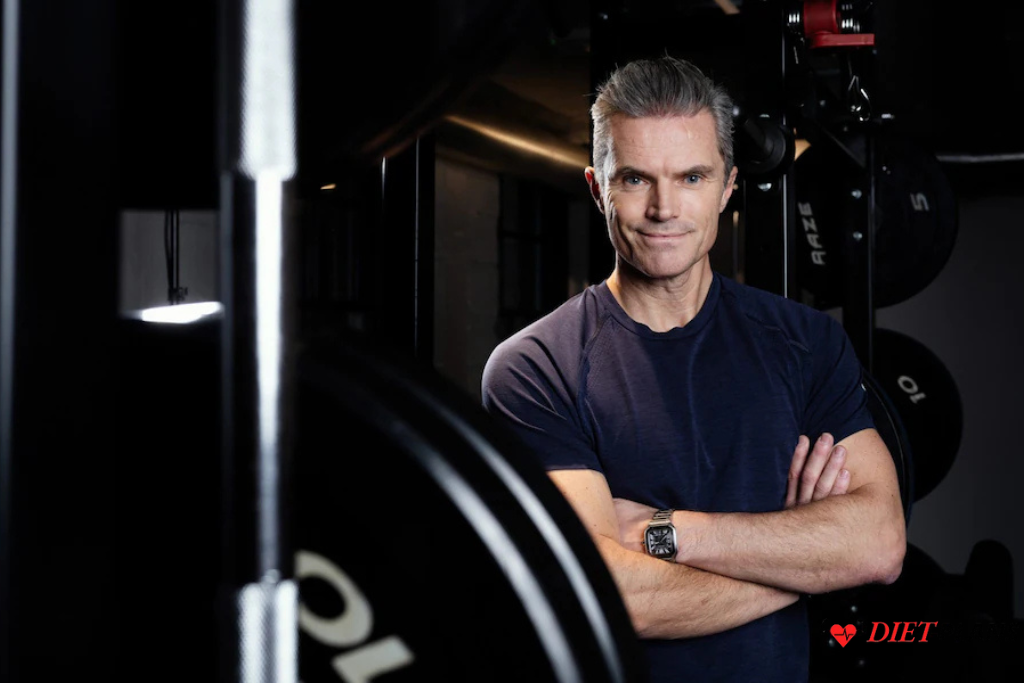Matt Roberts: The Fitness Guru Who Believes You Can Live to Be 100
The first celebrity fitness trainer was Matt Roberts. Among the well-known people he has coached are singers Melanie Chisholm and Ellie Goulding, fashion designer Tom Ford, television personality Amanda Holden, and current foreign minister David Cameron. He is also taciturn. He smiles when we meet at his Evolution gym in Grosvenor Square, Mayfair, a chic corner building with a glass front branded with the “MR” logo. He says there are “lots more besides that I wish I could tell you about” (there’s another one in South Kensington). However, he will only state that “they are fundamentally human.” They have a body, and that body is cared for in the same manner as everyone else’s. Everyone faces the same difficulties.
The Challenges of High-Profile Clients
To a certain extent, that is. Maintaining his health and fitness for the position of prime minister was Lord Cameron’s difficulty. According to Roberts, who trained him when he was in Number 10, “He’s a tremendous guy.”
Other well-known clients must get ready for new difficulties. He says, “Ellie Goulding is a good example.” “There are challenges in getting her ready for concerts after having a baby and so on.”
A Critical View of Fitness Influencers
He is rather contemptuous of the current generation of internet fitness influencers because he established his fitness business before social media. “There are a lot of people out there who are categorized as fitness influencers, which is a ridiculous title, and the majority of them don’t actually know a lot,” he claims. “They are more important than the goods. It’s big on images rather than content.
Truly made to provide you with anything other than the impression that ‘they look great.’ The shows that we do see are so rudimentary that they are absurd.”
The Evolution of Fitness Training
The concept of personal trainers was not as well-known when Roberts started his career. Indeed, the idea of athletic performance dates back at least as far as the Ancient Greeks, but personal training was not yet a viable professional path, and the gyms of the mid-1990s were far different from the modern profusion of slick, high-tech facilities.
According to Roberts, “Gyms were usually big, box-like things – a little sweaty and not very nice.”
Early Life and Passion for Fitness
He was going to alter all that at the age of 22. Being the son of a professional football player and growing up in Cheshire, he was already surrounded by fitness and sports. “Being active was the most normal thing in the world,” he claims. “Years later, I was always shocked that people didn’t do that.”
He was a gifted athlete and sportsman like his father, John, who played for Arsenal, but he was more interested in the science and performance side of things. He claims that he was captivated by the workings of the human body even at the age of sixteen.
A Leader in the Fitness Industry
In 2023, he will be one of the most well-known figures in the fitness industry and may be the most prosperous personal trainer globally.
Since Roberts established the first gym in Europe dedicated solely to personal training in 1996, personal training has grown significantly in popularity. Along the process, he has written twelve books. In 2019, he founded Evolution to maximize longevity and health. His goal was to convey a science-based message in an easy-to-understand manner.
The Goal: Live to Be 100
The main takeaway from this message is that “[you can] live better for longer.” Being able to walk up a hill at 90 and play tennis at 80 are key components. That is the objective and aspiration.
Roberts, a toned and slender 50-year-old who says, “I’d like to view it as being halfway,” is a living example of his methodology. His current fitness and health statistics are identical to those from his 20s. His weight, dimensions, testosterone level, and body fat percentage are all the same as they were thirty years ago. The only thing that has altered is his cholesterol, which is now somewhat lower. However, he adds, “All of this requires effort.”
Fitness Tips for Midlife and Beyond
What should the typical midlifer be doing, then? Roberts suggests two or three weekly bouts of resistance loading, 60 minutes of intense aerobic exercise, and 200 to 250 minutes of moderate activity per week, such as slow running or quick walking.
“Going to the gym twice a week isn’t the solution,” he argues. It’s not that much to expect to dedicate six to seven hours a week to engaging in the appropriate activities. There is time for everyone. It is possible.
He makes clear the issues, possibly averting criticism. “If you exercise moderately frequently, you can keep [things that ultimately kill you] at bay and be super active in your 70s, 80s, and beyond. If you don’t, you do die and get sick faster.”

